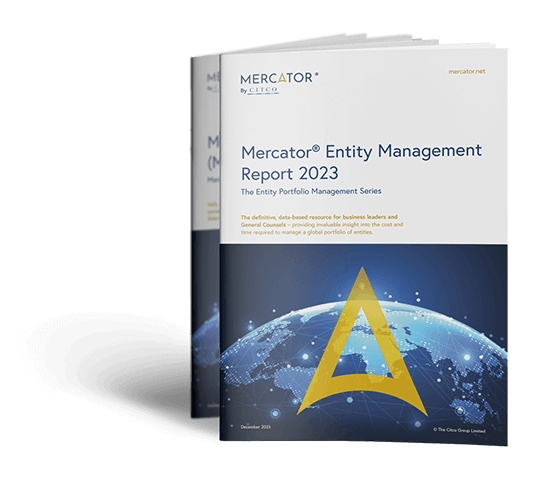The information contained in this document is marketing material and for informational purposes only. The information contained in this document is presented without any warranty or representation as to its accuracy or completeness and all implied representations or warranties of any kind are hereby disclaimed. Recipients of this document, whether clients or otherwise, should not act or refrain from acting on the basis of any information included in this document without seeking appropriate professional advice. The provision of the information contained in this document does not establish any express or implied duty or obligation between Citco and any recipient and neither Citco nor any of its shareholders, members, directors, principals or personnel shall be responsible or liable for results arising from the use or reliance of the information contained in this document including, without limitation, any loss (whether direct, indirect, in contract, tort or otherwise) arising from any decision made or action taken by any party in reliance upon the information contained in this document. © The Citco Group Limited, December 2023.
Corporate Transactions: 5 key considerations before taking the plunge
Large-scale corporate transactions have become a powerful tool for strategic business model transformations.
If carried out correctly, cross-border mergers or acquisitions can provide opportunities for companies to grow into new markets, give shareholders options for their stakes, or address financial challenges head on.
They can also be very complex. Questions abound around how to handle and split the work across the business, what corporate structure to use, and whether to outsource some or all of the process.
As ever, any business embarking on this journey should consider how to make the process as smooth as possible, and – most importantly – achieved by the pre-agreed target date. Here are five key considerations businesses should take into account before proceeding.
1. Pre-work is crucial
Good planning is critical throughout the corporate restructuring process. If a deadline is tight, proper pre-work pays-off in the later stages, helping to avoid unexpected events and complications.
Preparing a consolidated list of scheduled changes, evaluating the sequence of legal actions, checking whether necessary corporate documents are available for drafting purposes, determining applicable laws to verify the compliance, and identifying project stakeholders can be major timesavers in the pre-work phase.
All of the above is particularly important when it comes to cross-border projects involving multiple subsidiaries across different jurisdictions or regions.
2. Centralized workflow
Corporate transactions can often involve multiple teams and stakeholders. It can be a challenge to take everyone on the same journey if actions are carried out independently of each other.
However, if all the efforts are centralized, and tasks are distributed as part of a coordinated plan of action, it can make the whole process more efficient.
This is of course easier said than done, but there are many practical ways to achieve this centralization. For example, a communication matrix showing who needs to communicate or be accountable to whom can have a big impact, as can single-channel communication between stakeholders, especially if one individual is given responsibility for part, or all, of the process. This helps to avoid a lack of coordination that can lead to situations where deadlines are missed or tasks are not completed.
Within this centralized workflow, it also makes sense to combine document gathering and drafting across different entities, ensuring the necessary data and documents are all being handled together to avoid any delays.
3. Make deadlines – and stick to them
To ensure the overall project is on track, companies can break up the process into smaller steps and set up interim deadlines.
Regular follow-up calls with clear agendas can increase accountability for all parties and help to meet the final deadline, and ensure everyone is pushing towards the same targets at the different stages of the project.
4. Be flexible
During a corporate transaction things can change, issues can arise, and the unexpected can happen. Being prepared for such scenarios is key, allowing businesses to solve problems and adapt to challenges if they arise. No business should be wedded to one single course of action. Instead, they should build in some leeway to plans so they can be flexible.
5. Don’t forget Post-transaction actions
Deadlines and immediate priorities can sometimes lead to decisions that may require remedial or supplemental actions after a deal closes.
Addressing these should be something that is on everyone’s radar to help ensure any corporate transaction is successful and sustainable over the long-term.
When companies get these five things right, it marks the difference between a successful process outcome and one that, although it may ultimately achieve its goal, will do so at the expense of severe headaches and many sleepless nights.
Jolanta Bajarune
Client Relationship Manager, Citco Mercator, UAB
